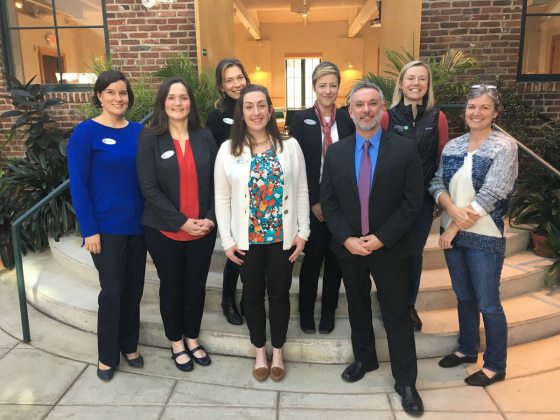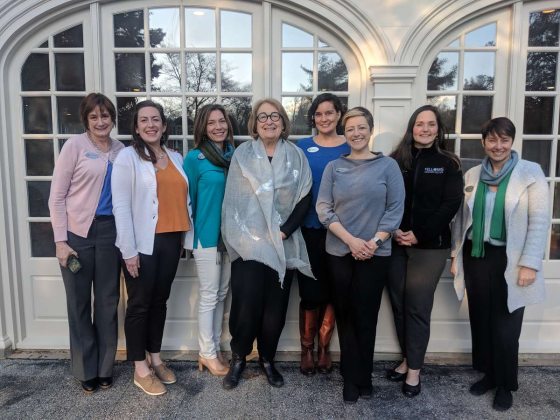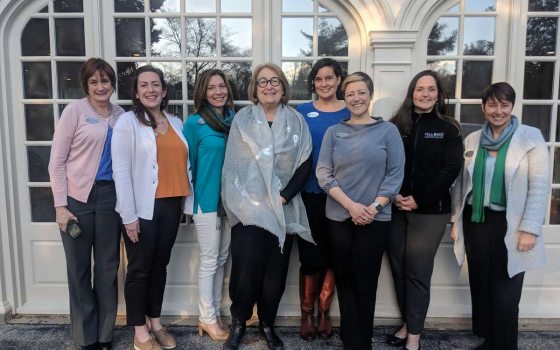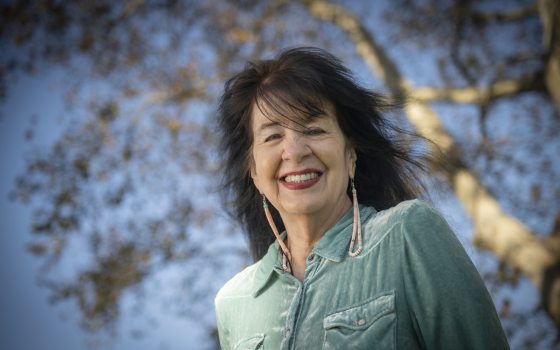The Longwood Fellows have enjoyed two salons in January; the first illustrating the importance of partnerships and the second focusing on the art of strategic planning.
In the first of the two salons, we were hosted by The Delaware Center for Horticulture Executive Director Vikrim Krishnamurthy and Director of Programs and Impact Ann Mattingly. Joining us for the salon was one of their key partners, The Nature Conservancy Director of Urban Conservation Maria Dziembowska.
For more than 40 years, DCH has been inspiring individuals and communities through the power of plants to enhance the quality of living in Delaware’s towns and cities by looking at how plants meet people’s basic needs—air, water, and food. Working with both local and global partners, DCH is improving air quality by increasing urban tree canopy, managing stormwater to mitigate floods, and providing communities with opportunities to grow their own food in urban gardens. Krishnamurthy and Mattingly know that to have the greatest impact with these initiatives—and their many other projects—successful partnerships are paramount.

DCH’s work with The Nature Conservancy demonstrates the power of partnerships. Together they have worked on improving vacant lots in the city of Wilmington to make them cleaner, greener, and more attractive.
“The key,” according to Dziembowska, “is a commitment to shared values.” Krishnamurthy agrees and notes that selecting the right partners is strategic: “When starting a new partnership, we want to know, are we stronger together than alone? Do we share goals and values? For DCH, we want partners to share our value of putting the community’s best interest first.”
A strong partnership built on trust takes time, skill, persistence, and finesse. It often starts with a trust between individuals. Mattingly recalls a memorable meeting between DCH and The Nature Conservancy, years into the building of their partnership, where she “could feel the organizational boundaries dissolving. All of a sudden there were four people at a table committed to just doing the work. It represented the ideal partnership, where it’s all about shared goals, not about the individual organizations.”
Our second salon of the month was with President and Co-founder of Lord Cultural Resources Gail Dexter Lord. Also the world-renowned author of Cities, Museums and Soft Power and The Manual of Strategic Planning for Cultural Organizations, Lord visited Longwood on Thursday, January 24, to engage in a conversation on cultural diplomacy in a changing world. During Lord’s time at Longwood, she discussed the strategic planning process cultural organizations around the world use to influence opinion leaders and improve communities.

The salon was a brief, intensive day discussing the strategic planning process, based on Lord’s credo that “success must have a process attached to it.”
Longwood’s 2022 strategic plan encompasses five goals:
- 1. Advance our mission of excellence and beauty to ensure an extraordinary guest experience.
- 2. Invest in Longwood Gardens’ Staff, enhance diversity, and advance safety programs.
- 3. Preserve and advance Longwood Gardens’ fiscal flexibility to achieve our mission and advance our vision.
- 4. Measure and communicate the value and impact of our mission.
- 5. Demonstrate our civic responsibility by advancing our commitment and leadership in environmental stewardship, community engagement, and accessibility.
Each of these goals are cross departmental, and our strategic plan as a whole speaks to Lord’s assertion that the strategic planning process should emphasize the idea of the organization as an ecosystem where each department needs to work closely with others for the success of the organization.
Partnerships are also a crucial part of the ecosystem. Longwood’s goals not only span the organization but focus outward. The strategic planning process provides the opportunity to look at established partnerships and cultivate new relationships as directed by the plan. Assessing partnerships during the implementation phase of the strategic plan is a must. Consider the following during the assessment: are each of the organizations healthy? What is the reach of each organization’s audience? Does each organization demonstrate civic responsibility? Does each institution work in a collaborative spirit? These questions provide a structure in which to assess each relationship.
Strategic planning can provide an excellent framework to move an organization forward. Partnerships are a key piece of the strategic plan and should not be underestimated, ultimately providing a structure in which organizations can be stronger together than alone.


